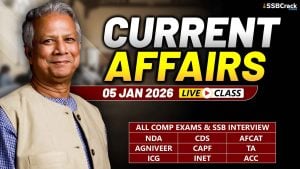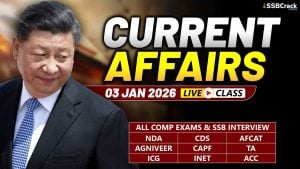Raksha Mantri Shri Rajnath Singh pays homage to fallen heroes at National War Memorial on 21st anniversary of Kargil Vijay Diwas yesterday
- Raksha Mantri Shri Rajnath Singh along with Raksha Rajya Mantri Shri Shripad Naik, Chief of Defence Staff & Secretary Department of Military Affairs General Bipin Rawat, Chief of Army Staff General M M Naravane, Chief of Naval Staff Admiral Karambir Singh and Chief of Air Staff Air Chief Marshal R K S Bhadauria paid homage to the fallen heroes at National War Memorial on the 21st anniversary of India’s victory in ‘Operation Vijay’ also known as Kargil conflict. Indian Armed Forces’ victory in Kargil on 26 July 1999 is a saga of strong political, military, and diplomatic actions. The Nation is celebrating this day with pride, honour, and inspiration.
- Raksha Mantri wrote a message in the visitors’ book at the War Memorial, “On the occasion of Kargil Vijay Diwas today, I pay my obeisance and salutation to the brave soldiers of the Indian Armed Forces who sacrificed their lives to protect motherland from the enemy. The country will always remember the courage, valour, restraint & determination of our fallen heroes and will march ahead taking inspiration from their supreme sacrifice.”
- Brave soldiers of the Indian Army had overcome seemingly insurmountable odds, hostile terrain, inclement weather, and the enemy occupying dominating heights, to win the conflict with the help of Indian Air Force, which gave the air support. On this momentous occasion, the proud nation is celebrating this victory in memory of fallen heroes with events covering a myriad spectrum all across the country. Defence Secretary Dr Ajay Kumar and other senior civil and military officials of the Ministry of Defence were present on the occasion.
Western Army Commander Visits Sectors under his control
- Lieutenant General Ravendra Pal Singh, Army commander, Western Command, visited forward areas in western sector and reviewed the operational preparedness. He commended the troops for their high morale and exhorted them to work with same zeal and enthusiasm.
IAF in HADR operations in Bihar
- IAF has deployed helicopters for Humanitarian Assistance & Disaster Relief (HADR) in flood affected districts of Bihar today. Relief material was airdropped in inaccessible areas of Darbhanga, East Champaran, Madhubani & Gopalganj.
- Humanitarian Assistance and Disaster Relief Operations by Indian Air Force will continue in coming days as well.
Indian intelligence-gathering satellite EMISAT passes over Tibet, China mobilises troops
- India’s premier intelligence-gathering satellite EMISAT, operated by the Defence Research and Development Organisation (DRDO), has taken a good look at the positions of the Chinese People’s Liberation Army (PLA) in occupied Tibet.
- The satellite which carries Kautilya, an ELINT (electronic intelligence) package whose “capabilities are among the most highly-classified and closely-guarded aspects of operation for military purposes on Saturday carried out a pass over PLA positions in occupied Tibet near Arunachal Pradesh,” an official source said.
- Built by the Indian Space Research Organisation (ISRO), EMISAT’s ELINT missions monitor radio signals which are used to determine the nature and location of all the sources of transmissions in an enemy area.
- The satellite pass came a day after talks between India and China over the stand-off over Chinese structures on Finger 4 area along the Line of Actual Control (LAC) in Pangong Tso in Ladakh, made no headway, even as both sides have agreed to continue their meetings aimed at disengagement and de-escalation.
- Sources said the Chinese troops have also been mobilised in Depsang sector, as soldiers could be spotted digging the area on their side of the LAC. The PLA had also intruded into Depsang in 2013.
- On Friday, sources said, Indian radar reconnaissance satellite RISAT-2BR1 carried out a pass over Chinese People’s Liberation Army Navy (PLAN) base in Djibouti in the Horn of Africa. The base is the PLAN’s first overseas military base, built at a massive cost. Recently, there were reports that three Chinese warships are in the waters near the Djibouti coast.
- On July 11, EMISAT’s ELINT (Project Kautilya) carried out a pass near Pakistan Navy’s Ormara base (Jinnah Naval Base). The base also has submarine berthing facilities and has reportedly hosted Chinese submarines in recent years.
- Though India and China remain engaged in talks over the LAC standoff, there is speculation in Ladakh and Kashmir that Pakistan and China are preparing for a two-front war against India during the coming winter.
US eases export restrictions on unmanned drones, New Delhi to benefit
- President Donald Trump’s order on updated export restrictions on unmanned aerial vehicles (UAV), with the new speed limit of 800 kmph, will not only help its allies in the Middle-East facing the brunt of Chinese armed drones in Libyan theatre but will also help India acquire proven Predator-B armed and Global Hawk surveillance drones from the US. Both the top of line drones have speeds less than 800 kmph.
- A statement issued by White House said, “The President has decided to invoke our national discretion to treat a carefully selected subset of missile technology control regime category I unmanned aerial systems (UAS), which cannot travel faster than 800 kmph as category II… This will increase our national security by improving the capabilities of our partners and increase our economic security by opening the expanding UAV market.” This policy change means that the UAVs under 800 kmph will no longer be subjected to the “strong presumption of denial” of the MTCR”.
- While the US defence contractors were restricted by the Missile Technology Control Regime (MTCR) UAS clause, the Chinese have been supplying Wing Loong armed drones to Pakistan and for use in the Yemen and Libyan civil war. According to intelligence reports, China has already supplied four Wing Loong armed drones to Pakistan for protection of the CPEC and Gwadar port. The drone, which has a limited track record, carries more than 1,000 kilograms of bombs or air-to-surface missiles. Neither China nor Pakistan are members of the MTCR, hence there is no restriction on Beijing to export these systems to Islamabad.
Indian Navy’s Green Efforts: Reducing carbon footprint, Solar Power Plants inaugurated in three commands
- In line with the government’s initiative of ‘National Solar Mission’ to achieve 100GW of solar power by 2022, the Indian Navy has so far between May-July installed large Solar Power Plants in three Commands. Earlier this month, a 3 MW Solar Power Plant project executed by Kerala State Electronics Development Corporation Ltd (KELTRON), was inaugurated at Indian Naval Academy (INA), Ezhimala, Kerala.
- It is one of the many initiatives taken by INA towards green environment and reducing the carbon footprint. Vice Admiral Anil Kumar Chawla, Flag Officer Commanding-in-Chief, Southern Naval Command (SNC) commissioned the plant.
- According to the Indian Navy, the surplus power generated at the largest Solar Plant has an estimated life span of 25 years and will also feed the Kerala State Electricity Board (KSEB) grid. It has all the components which have been indigenously sourced, and this includes 9180 highly efficient monocrystalline solar panels which use the latest technology.
- Adhering to all the protocols and guidelines against COVID-19, the project has been executed in a time-bound manner in which all the concerned agencies have played a significant role.
- Another 2-Megawatt Solar Power Plant has been inaugurated at Naval Station Karanja, Uran. E-inaugurated by Vice Admiral Ajit Kumar, Flag Officer Commanding-in-Chief, Western Naval Command, the first 2 Mega Watt Capacity Solar Power Plant has been installed at Naval Station Karanja. One of the largest solar plants in the region has 100 per cent indigenously developed solar panels, tracking tables and inverters.
- “This plant is grid interconnected by using the state of art single-axis sun tracking technology which has computerised monitoring & control” said the Indian Navy.
- Adding, “It is one of the most significant steps which have been taken by the Indian Navy in an effort to harness solar energy and for meeting the power supply of the Naval station to use a renewable source of energy.”
- Another 2 MW Solar Photovoltaic Plant has been commissioned at INS Kalinga, Visakhapatnam by Vice Adm Atul Kumar Jain, Commanding-in-Chief, Eastern Naval Command (ENC) in May.
- Currently being headed by Cmdre Rajesh Debnath, INS Kalinga has taken significant strides in green initiatives, since it has been set up in the 1980s, and this includes numerous plantation drives, coastal cleanup drives, afforestation, and protection of the Geo-Heritage site “Erra Matti Dibbalu”.
- The plant, which is the largest in the ENC and has an estimated life of 25 years. To complete the project despite the countrywide lockdown due to the global pandemic, all stakeholders including APEPDCL had worked out a contingency plan which was based on the protocols laid down.
China’s weapon supply to Myanmar terrorists re-ignites NE insurgency fears
- The recent seizure of a large quantity of illegal Chinese weapons in Mae Tao region, which is on the Thai side of the Myanmar-Thailand border, has given rise to India’s fear of “another attempt to reignite insurgency in its Northeast region”, a Europe-based think-tank said.
- Citing a June 23 report published in The Irrawaddy, the European Foundation for South Asian Studies (EFSAS) said, “While preliminary investigations have suggested that the weapons may have been destined for insurgent groups in Myanmar, the development has nonetheless raised antennae within security circles in New Delhi. It has also reignited the serious questions that had existed for long about the scope and depth of China’s support to terrorist groups in the region in pursuit of its policy of what a Thailand-based organisation termed ‘diplo-terrorism’.”
- While confirming the report that the weapons seized from the Myanmar-Thailand border belonged to China, The Irrawaddy quoted a source from an ethnic armed organisation based on the border as saying, “They are not the weapons currently used by the AA (Arakan Army). The weapons manufactured by the Wa (United Wa State Army) and the KIA (Kachin Independence Army) are not up to much. They cannot fire on automatic. The seized weapons are original and Chinese-made.”
- Indian insurgents from the country’s North-eastern states who have been sheltering for years in Myanmar, as well as the AA that has its roots in the Rakhine state of Myanmar, both present security challenges for India. In addition to being threats to national security, they are also irritants that impact India’s Act East Policy. The Indian suspicion, not without basis, is that impeding the progress of India’s Act East projects has assumed weight in China’s strategic thinking. The influx of Chinese weapons is, accordingly, in tune with such thinking.
- With regard to this matter, on July 20, India’s Ambassador to Thailand, Suchitra Durai, held a meeting with Unsit Sampuntharat, Governor of Tak province of Thailand in which Mae Sot is located. Meanwhile, the Indian security agencies have also been in touch with their counterparts in Myanmar and Thailand to get further details about the seized consignment.
- Citing a study titled ‘China’s diplo-terrorism in Myanmar’ by Anders Corr, a former civilian worker for the United States’ military intelligence, that appeared in the Bangkok-based LiCAS.news, EFSAS said, “China was supplying funds and sophisticated weaponry to the AA, a terrorist organisation, in a bid to expand its diplomatic influence in Myanmar.”
- “An object lesson in diplo-terrorism is the leverage over Myanmar and India that China gained by arming the Arakan Army, operating in the corridor from North-East India over Myanmar’s Chin and Rakhine states to the Indian Ocean. The evidence of China using violence by ethnic militias in Myanmar against its competitors demonstrates the violent side of its Belt and Road development project, which not only ensnares recipients in debt traps, but seeks to bar competitors through violent means deployed by criminal sub-state actors…, Corr was quoted as saying.
- “Sadly, China’s conception of its role in the world seems to be guided by exactly the zero-sum conflict over territory and influence that it accuses others of fomenting. It does not limit itself to soft power. Rather, Beijing associates with the lowest-level forms of terrorist and gangland violence in order to attain its diplomatic objectives,” Corr said.
- The Amsterdam-based think tank recalled US Senator Larry Pressler as saying, during his visit to Kolkata in 2002, that China was the world’s major source of small arms proliferation that was “fuelling conflicts from Morocco to Malaysia”.
- Similarly in 2015, strategic analyst Wasbir Hussain said, “China, in fact, holds the key to the availability of weapons and ammunition among the terror groups in North-East India that is actually keeping insurgency alive in this far-eastern frontier.”
- The EFSAS opined that while China’s acts of violation of the international order are increasing since the outbreak of COVID-19 pandemic, “it is high time that state sponsorship of terrorism by China is acknowledged, exposed and accorded the serious corrective attention that it eminently deserves.
Russia Delivers Second S-400 Systems to China
- Russia has reportedly delivered the second S-400 Triumf missile defence system to China amid rising tensions with the US. The S-400s were reportedly delivered via maritime transport, the handover certificate was signed in December in China, a military-diplomatic source told Russian news agency – TASS.
- “Delivery of a second S-400 regimental set consisting of two divisions of launch devices, radiolocation stations, energy and service equipment, spare parts and instruments to China has been completed. The client also received more than 120 advanced anti-aircraft guided missiles of two types,” the source said.
- Tass quoting its source stated that the S-400 handover certificate was signed in China in December 2019. “After the moment of signing, the contract provision on 18-month guarantee service of the equipment by the Russian side came into force.”
- The source also added that all the shipments were delivered to China by a few vessels. The first maritime transport ship headed to China in July 2019.
- China became the first international buyer of Russia’s most advanced S-400 surface-to-air missile systems. Russia signed a contract with China on the delivery of two regimental sets of S-400 in 2014.
- The first regimental set of S-400 was delivered to China in 2018. The Chinese military successfully test-fired the missile launchers and hit an aerodynamic and a ballistic target.
- S-400 Triumph is designed to destroy aircraft, cruise, and ballistic missiles, and can also be used against ground installations. The S-400 can engage targets at a distance of up to 400 km and at an altitude of up to 30 km under intensive enemy fire and jamming.
- Russia has signed delivery contracts for S-400 systems with China, Turkey, and India (the deliveries are expected in late 2020).
India shows interest to acquire Russian 2S25M Sprut-SDM1 self-propelled anti-tank tracked armoured
- “Amidst the ongoing standoff in Ladakh, India has sent out a Request for Information (RFI) to Russia for its Sprut light tanks. India has not yet disclosed the exact numbers of tanks to be purchased,” said the website Indian Defence Industries (IDI), citing unnamed sources.
- The Sprut-SDM1 is a deeply updated variant of the renowned Sprut-SD air-droppable SPATG. Russia’s arms exporting company Rosoboronexport (a subsidiary of state corporation Rostec) introduced an export-oriented variant of the system to the global market in mid-2018.
- According to the company, the Sprut-SDM1 land platform (its export-oriented model is designated ‘an amphibious light tank’, not ‘a SPATG’) combines high manoeuvrability and decent firepower. The new system features firepower of the main battle tank and can be airdropped.
- The export-oriented Sprut-SDM1 is initially intended for naval infantry and ground troops; however, it can be operated as a traditional light tank in an effective manner. The platform’s armament suite integrates a 125 mm tank cannon, a guided weapon, and a remotely operated weapon system with a 7.62 mm general-purpose machinegun. It should be mentioned that the Sprut-SDM1 fires on-the-move and when swimming. Its sensor suite allows the crew to engage targets round-the-clock and in low-visibility environments. The light tank also features a modern highly automated fire-control system.
- The Sprut-SDM1’s firepower capabilities seem to be on par with those of main battle tanks: the platform’s guided weapon allows the system to engage heavy targets, which are protected by explosive reactive armour, at a distance of up to 5 km.
- The combat vehicle weighs some 18 t and is powered by a 450-hp engine, producing a road speed of up to 70 km/h and a cruising range of 500 km. As mentioned earlier, the platform is amphibious and can swim for seven hours. The Sprut-SDM1 is manned by a three-strong crew.
- The new light tank has two main competitors in the global market, namely the Chinese Type 15 light tank and the Turkish Kaplan MT medium tank. Being a vehicle of the same class, the Sprut-SDM1 has two advantages — a main battle tank-type main gun and amphibious capabilities. Both Type 15 and Kaplan MT carry 105 mm main guns with shortened barrels, while the Sprut-SDM1 is armed with the 125 mm cannon that features higher muzzle velocity and lethality. The use of a guided weapon (neither Type 15 nor Kaplan MT deploys such a capacity) dramatically increases the platform’s distance of firing, turning it into ‘a long hand’ on the battlefield.
- The second advantage of the new platform is its tactical flexibility — the Sprut-SDM1 can fire during swims. The system can also be air-transported by a heavy helicopter or a medium airlifter. The combination of light ballistic protection and high manoeuvrability provides the light tank with decent combat survivability.
- The Sprut-SDM1 can be effectively used over rough and mountainous terrains.
82nd CRPF Raising Day
- Central Reserve Police Force (CRPF) is celebrating its 82 raising day today.
- The Central Reserve Police Force (CRPF) is India’s largest Central Armed Police Force. It functions under the authority of the Ministry of Home Affairs (MHA) of the Government of India.
- The CRPF’s primary role lies in assisting the State/Union Territories in police operations to maintain law and order and counter insurgency. It came into existence as the Crown Representative’s Police on 27 July 1939.
- After Indian Independence, it became the Central Reserve Police Force on enactment of the CRPF Act on 28 December 1949.
- With 246 battalions and various other establishments, the CRPF is considered India’s largest paramilitary force and has a sanctioned strength of more than 300,000 personnel as of 2019.
- Motto: “सेवा और निष्ठा” (Service and Loyalty).
Remembering His Excellency Late Dr. APJ Abdul Kalam on his Death Anniversary
- Avul Pakir Jainulabdeen Abdul Kalam (15 October 1931 – 27 July 2015), an Indian aerospace scientist and politician who served as the 11th President of India from 2002 to 2007, was born and raised in Rameswaram, Tamil Nadu and studied physics and aerospace engineering. APJ spent the next four decades as a scientist and science administrator, mainly at the Defence Research and Development Organisation (DRDO) and Indian Space Research Organisation (ISRO) and was intimately involved in India’s civilian space programme and military missile development efforts.
- He thus came to be known as the Missile Man of India for his work on the development of ballistic missile and launch vehicle technology. He also played a pivotal organisational, technical, and political role in India’s Pokhran-II nuclear tests in 1998, the first since the original nuclear test by India in 1974.
- Kalam was elected as the 11th President of India in 2002 with the support of both the ruling Bharatiya Janata Party and the then-opposition Indian National Congress. Widely referred to as the “People’s President”, he returned to his civilian life of education, writing and public service after a single term. He was a recipient of several prestigious awards, including the Bharat Ratna, India’s highest civilian honour.
- While delivering a lecture at the Indian Institute of Management Shillong, Kalam collapsed and died from an apparent cardiac arrest on 27 July 2015, aged 83.
- Thousands, including national-level dignitaries, attended the funeral ceremony held in his hometown of Rameswaram, where he was buried with full state honours.
- Notable works: Wings of Fire, India 2020, Ignited Minds, Indomitable Spirit, Transcendence: My Spiritual Experiences with Pramukh Swamiji.
REVIEW QUESTIONS
- Operation launched by Indian Army during Kargil war:
- Operation Parakram
- Operation Vijay
- Operation Pokhran
- Operation Safed Sagar
ANSWER: B
- Operation launched by Indian Air Force during Kargil war:
- Operation Safed Sagar
- Operation Vijay
- Operation Meghdoot
- Operation Shakti
ANSWER: A
- India’s premier intelligence-gathering satellite
- CARTOSAT
- EMISAT
- ISAT
- GEOSAT
ANSWER: B
- EMISAT is operated by
- Indian Army
- Indian Navy
- Indian Air Force
- DRDO
ANSWER: D
- CRPF Act was enacted on
- 10 March 1969
- 20 May 1950
- 28 December 1949
- 26 September 1972
ANSWER: C
- Motto of CRPF:
- Service and Truth
- Service and Loyalty
- Victory and Service
- Victory and Valour
ANSWER: B
- President Donald Trump has recently ordered about updated export restrictions on unmanned aerial vehicles (UAV) with the new speed limit of:
- 600 kmph
- 700 kmph
- 800 kmph
- 900 kmph
ANSWER: C
- Which among the following is not a work of APJ Abdul Kalam?
- India 2020
- Ignited Minds
- Indomitable Spirit
- Gandhi, Nehru, Subhash
ANSWER: D

















